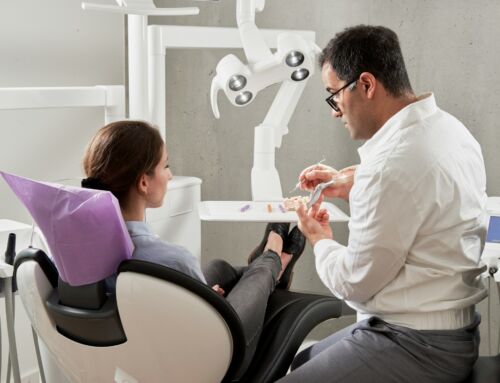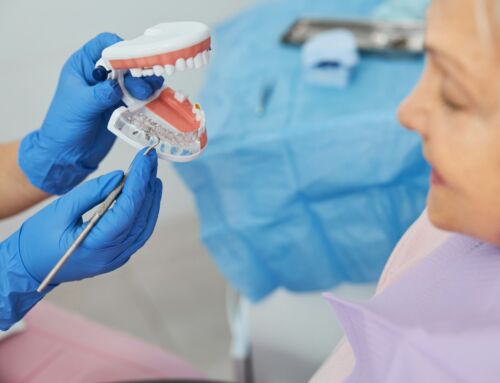Caring for dental implants is crucial to ensure they last a long time and keep your smile looking great. Just like natural teeth, implants need regular upkeep to stay in good condition. The first step is setting up a daily cleaning routine to remove plaque and food particles. This helps prevent gum disease and keeps your implants secure and strong.
Understanding Different Teeth Whitening Methods
Different teeth whitening methods offer various ways to achieve a brighter smile. One popular method is the use of whitening toothpaste. These toothpastes contain mild abrasives and special chemicals that help remove surface stains from your teeth. While they are easy to use and readily available, they may not offer the dramatic results some people are looking for.
Another common method is whitening strips. These thin, flexible bands are coated with a peroxide-based gel and applied directly to the teeth. They are usually worn for about 30 minutes a day over two weeks. Whitening strips can be quite effective for removing both surface and some deeper stains, but they may cause temporary tooth sensitivity.
For those seeking faster and more noticeable results, professional teeth whitening treatments are an excellent option. These treatments are performed by a dentist and involve the use of stronger bleaching agents. During the procedure, a protective barrier is applied to your gums, and then a hydrogen peroxide gel is placed on your teeth. This gel may be activated by a special light or laser to enhance the whitening process. Professional treatments can significantly brighten your smile in just one or two sessions.
Comparing At-Home Whitening Kits With Professional Treatments
Comparing at-home whitening kits with professional treatments helps you determine the best option for your needs. At-home kits, like whitening trays or strips, offer the convenience of treating your teeth in the comfort of your home. These kits usually contain a lower concentration of bleaching agents, making them safer for unsupervised use. They are also more affordable than professional treatments, making them a popular choice for those on a budget.
However, there are some limitations to at-home kits. The results may take longer to achieve and might not be as dramatic as those from professional treatments. Also, improper use of these products can lead to gum irritation or uneven whitening.
Professional treatments, on the other hand, are administered by a dentist, ensuring a safer and more controlled process. The higher concentration of bleaching agents used in these treatments means quicker and more noticeable results. Additionally, professional treatments often include customised trays that fit your teeth perfectly, reducing the risk of irritation and providing more even whitening.
While professional treatments may be more expensive, their effectiveness and the added safety of being performed by a dentist make them a worthwhile investment for many people seeking a brighter smile. Combining both approaches, starting with a professional treatment and maintaining the results with at-home kits, can also be an effective strategy for achieving and preserving a radiant smile.
Daily Cleaning Routine for Dental Implants
Maintaining a daily cleaning routine is essential for keeping dental implants in good condition. Just like natural teeth, implants require regular brushing and flossing to prevent plaque build-up and gum disease. We recommend using a soft-bristled toothbrush and non-abrasive toothpaste to clean around the implant area. Brushing should be done at least twice a day, with extra attention given to the areas around the implant to ensure they remain free of food particles and plaque.
In addition to brushing, flossing is crucial. Special dental floss designed for implants or interdental brushes can be particularly effective in cleaning hard-to-reach areas. We also suggest using an antimicrobial mouthwash to further reduce the risk of infection. By sticking to this routine, you can keep your implant and the surrounding tissues healthy, which helps ensure the long-term success of the treatment.
Foods to Avoid with Dental Implants
Although dental implants are durable and designed to handle normal chewing, certain foods should still be avoided to protect them from damage. Hard foods like ice, hard candies, and nuts can place undue stress on the implant and the crown, potentially causing cracks or dislodging the implant. Sticky or chewy foods like caramel and gummy sweets can also be problematic, as they can adhere to the implant and are difficult to clean off, leading to plaque build-up and gum disease.
It’s also wise to avoid highly acidic foods and drinks such as citrus fruits and sodas, as they can erode the surface of the crown over time. Adopting a balanced diet that includes plenty of fruits, vegetables, lean proteins, and whole grains can help maintain overall oral health. By being mindful of what you eat, you can protect your dental implants and ensure they remain functional and attractive for many years.
Conclusion
Understanding and caring for dental implants can make a significant difference in your overall oral health and confidence. By following a diligent cleaning routine and being mindful of the foods you consume, you can maximise the lifespan and functionality of your dental implants. Regularly checking for any signs of problems and consistently attending dental check-ups ensure any issues are addressed promptly, preserving the investment in your smile.
If you’re considering dental implants in Cheadle or need guidance on how to care for them, don’t hesitate to reach out to The Croft Dental & Implant Practice. Our team is dedicated to providing expert advice and high-quality dental care tailored to your needs. Schedule a consultation today to learn more about how dental implants can improve your life and restore your smile.






